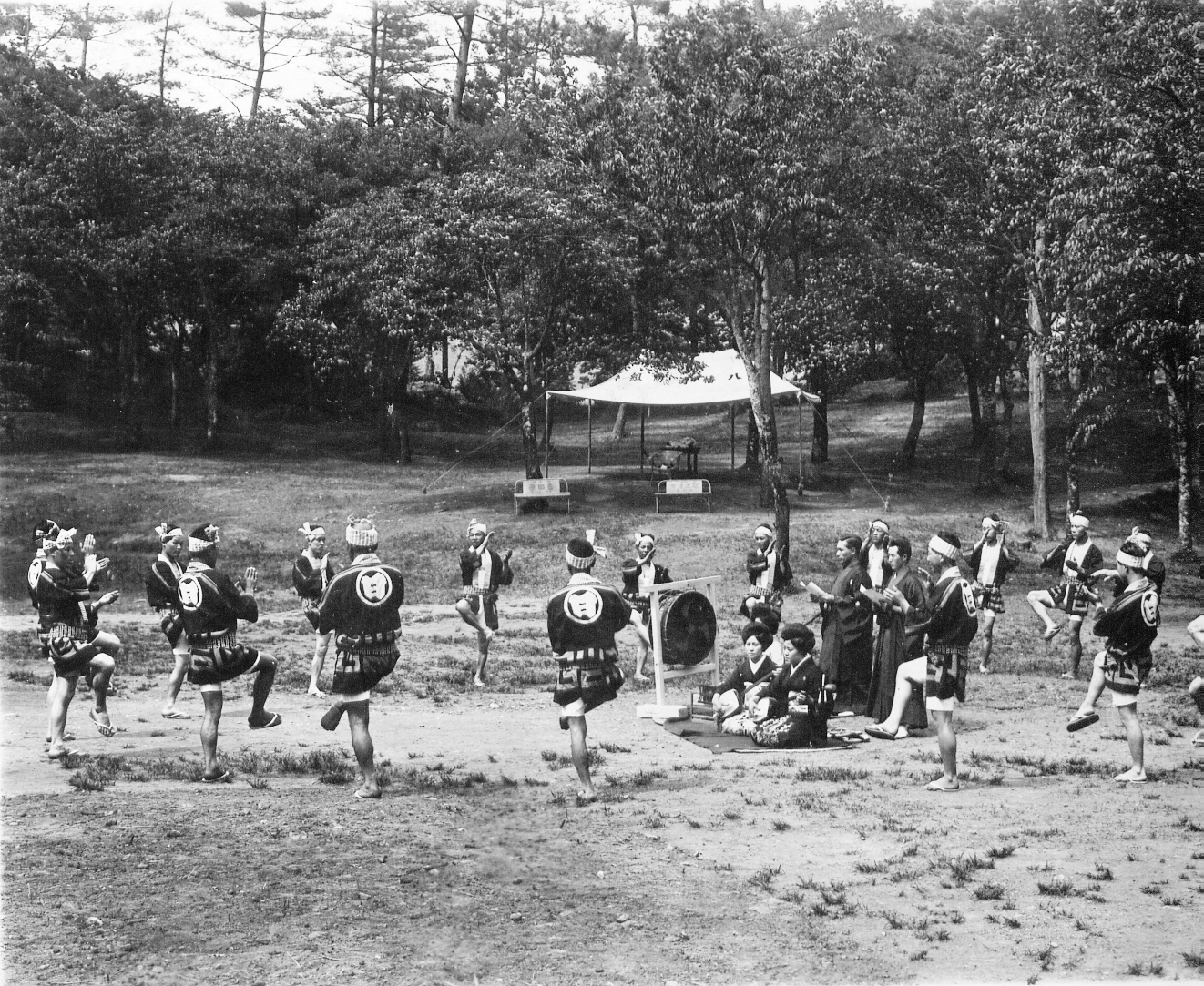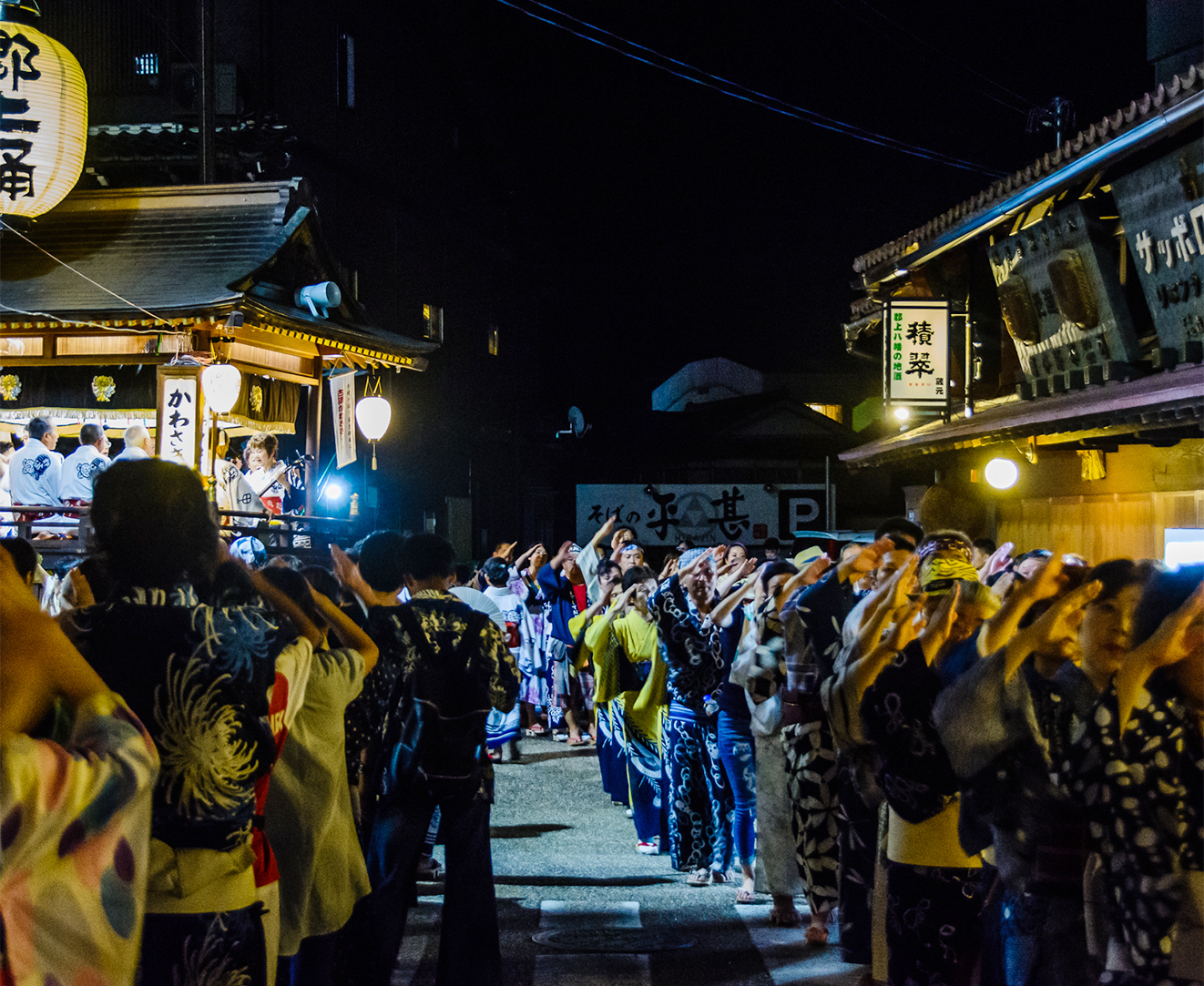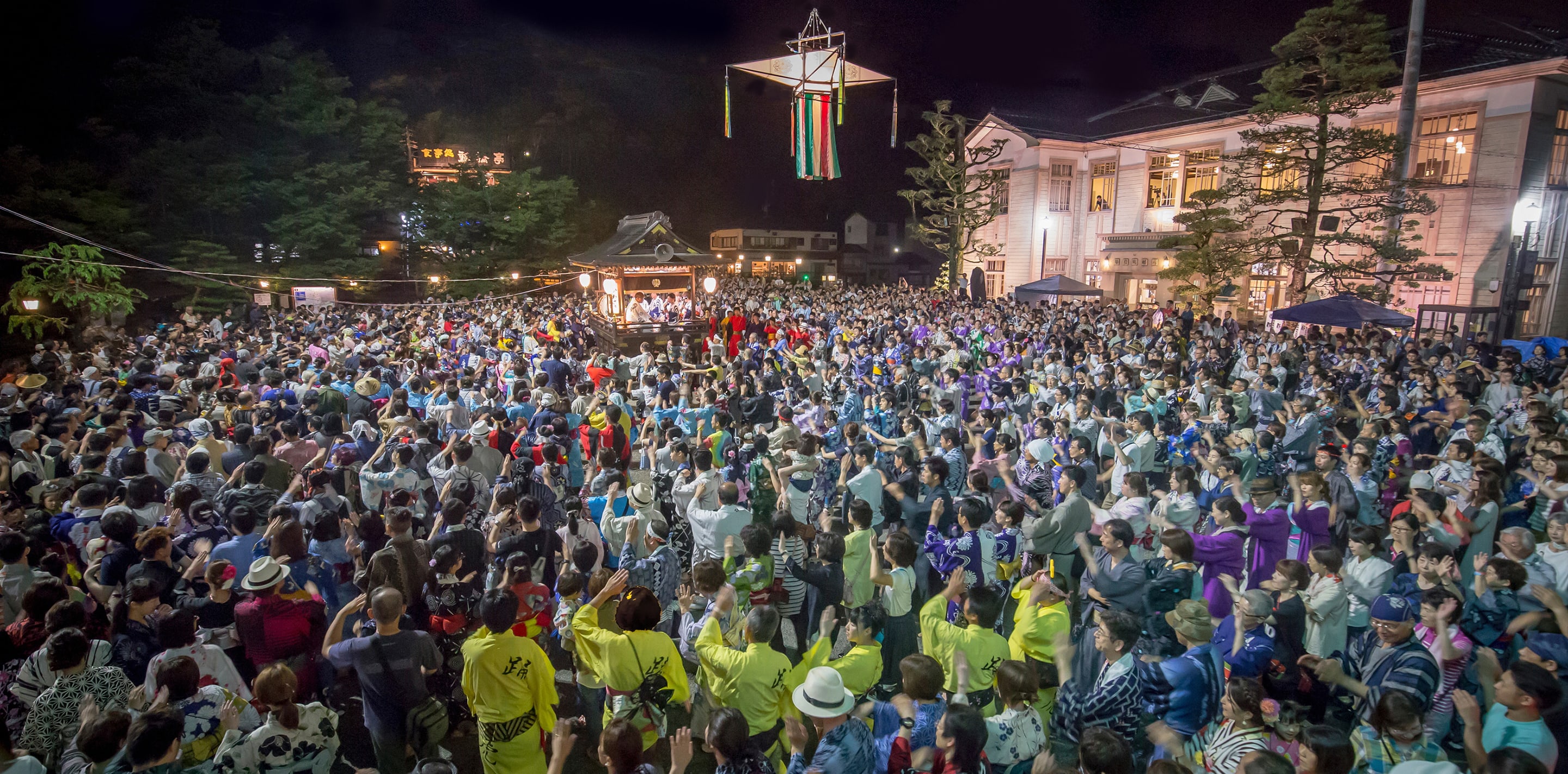The largest entertainment and
meeting place from Edo era
“When you leave Gujo Hachiman, you can squeeze your sleeves even there is no rain.” Is one of the lyrics of songs of Gujo Odori Dance. During Edo era and the end of Warring States period, people were encouraged to dance for four days, in order to enjoy the peace of mind and people making it become popular throughout the area. It seems that people often meet here and fostered friendships and affections. Okumino’s villagers at that time were only having social gathering place and the greatest entertainment during the dance. They made the history with songs and dances.

One of the three major folk song dances in Japan
All 10 songs are designated as National Important Intangible Folk Cultural Property
Although the origin of Gujo Odori Dance Festival is uncertain, Urabone (Buddhist ceremony held on July 15) is deeply related to Buddhism. The dance itself began with Nenbutsu Odori (Buddhist incantation using chanting, drumbeating, and dancing) spreading during Heian era (794 – 1185) as a memorial service for the ancestors. From generation to generation, it has always been handed down as spiritual core. Even on the day of the end of the war in 1945, people danced to comfort the spirit of the people passed away. After the war, it was called one of the three major folk song dances in Japan along with Awa Odori and Hanagasa Odori. In 1996, all 10 songs of Gujo Odori have been designated as National Important Intangible Folk Cultural Properties.

The largest entertainment and
meeting place from Edo era

“When you leave Gujo Hachiman, you can squeeze your sleeves even there is no rain.” Is one of the lyrics of songs of Gujo Odori Dance. During Edo era and the end of Warring States period, people were encouraged to dance for four days, in order to enjoy the peace of mind and people making it become popular throughout the area. It seems that people often meet here and fostered friendships and affections. Okumino’s villagers at that time were only having social gathering place and the greatest entertainment during the dance. They made the history with songs and dances.
One of the three major folk song dances in Japan
All 10 songs are designated as National Important Intangible Folk Cultural Property

Although the origin of Gujo Odori Dance Festival is uncertain, Urabone (Buddhist ceremony held on July 15) is deeply related to Buddhism. The dance itself began with Nenbutsu Odori (Buddhist incantation using chanting, drumbeating, and dancing) spreading during Heian era (794 – 1185) as a memorial service for the ancestors. From generation to generation, it has always been handed down as spiritual core. Even on the day of the end of the war in 1945, people danced to comfort the spirit of the people passed away. After the war, it was called one of the three major folk song dances in Japan along with Awa Odori and Hanagasa Odori. In 1996, all 10 songs of Gujo Odori have been designated as National Important Intangible Folk Cultural Properties.



